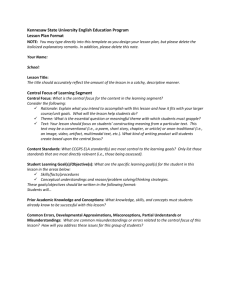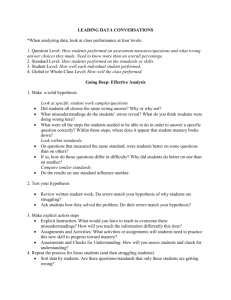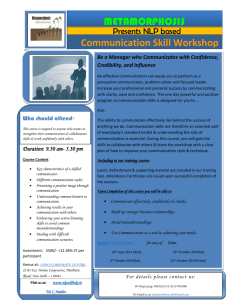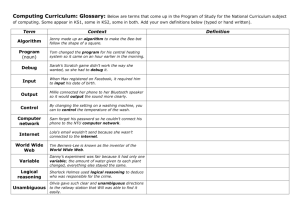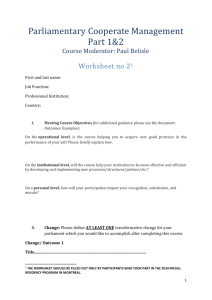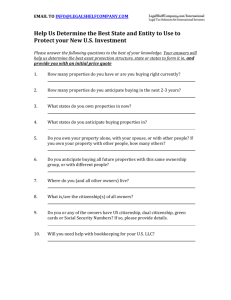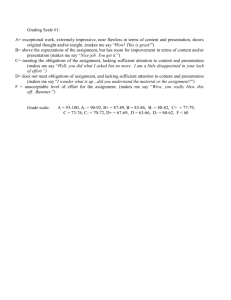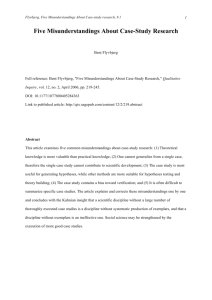guide - Achievement First
advertisement
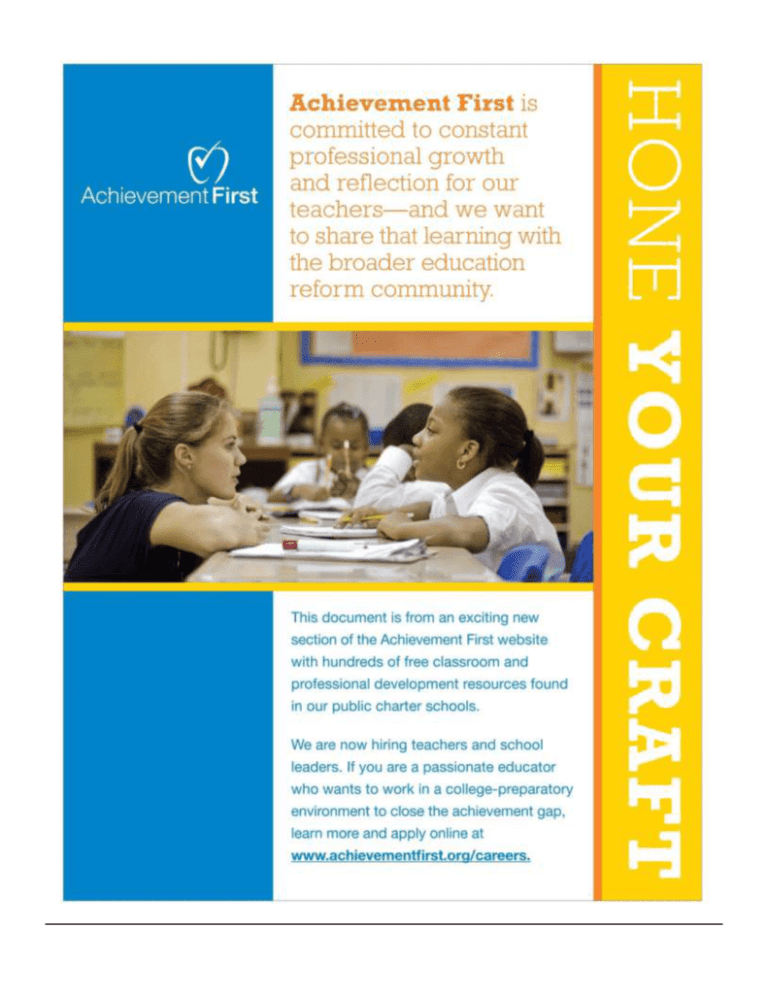
Suggested Steps for Planning Key Points 1) Planning the “What?” o Key terms - Have you given the concept a name to ensure that everyone shares common language? Have you defined the concept in teacher-friendly language? If needed, have you elaborated upon and clarified the concept? o Isolate the critical attributes – Have you analyzed an exemplar for any categories, types or organizing principles? Have you analyzed the exemplar for criteria for success? o Unambiguous examples – Do you have concrete examples that will clarify the concept? o Anticipate misconceptions – Have you scripted out possible misconceptions, both conceptual and procedural? Are there close confusers and other non-examples that may help here? 2) Planning the “How?” o ID the skill and desired output – Have you identified the skill you want to teach? Have you selected a task or example that requires the successful application of the skill? o Number the steps – Have you figured out the exact steps needed to complete the task which you want teachers to later apply on their own? o Plan think-aloud – If needed, have you planned a think-aloud script as if you are a struggling teacher, making sure you anticipate pitfalls, traps, and difficulties and how to overcome them? 3) Planning the “Why?” o Determine relevance – Have you articulated what is relevant and meaningful about the concept? Effective Key Points (p. 1 of 2) Like key points in a lesson plan, key points in a PD plan should provide an unambiguous picture of the following three things: what the concept is (the noun in the objective), why it matters and how to apply the skill (the verb in objective) in practice. Core element Purpose / Description What? This is usually the noun in your objective. Name and define Give the concept or skill a name to the concept ensure that everyone shares common language. Then, define the concept in teacher-friendly language so that everyone is on the same page. Describe the Elaborate upon and clarify that concept initial definition, if needed. You may need to present other background knowledge or explain unfamiliar concepts. Break down the Present a framework with 2-5 concept categories for applying that concept or skill. Give unambiguous Your concrete examples will clarify examples the concept. This is arguably the most important part of your key points. Identify criteria for success (or “____________”) Anticipate misunderstandings Analyze and isolate the components of ideal performance. This way, teachers can then use that list of attributes to determine whether their work represents a full exemplar. Anticipate two types of misunderstandings: those about the concept (conceptual) and those about the skill (procedural). Example – Planning for Right is Right Right is Right means holding out for all-the-way right answers and setting a high standard for correctness in our classrooms. We care about the difference between partially right and all-the-way right, between pretty good and 100%. Many teachers respond to almost-correct answers their students give in class - answers that are, say, ¾ correct - by “rounding up.” That is they’ll affirm the student’s answer and add some detail of their own to make it fully correct even though the student didn’t provide and may not recognize the differentiating factor as being significant. High expectations teachers round down. They play the role of a skeptical jury and assume that students don’t understand the answer. There are six common student responses to questions: 1) Opting out, 2) Inaudible response, 3) Answering a different question, 4) Sub-optimal response, 5) Right but wrong format or language, 6) Right response, right format Example for “Sub-optimal response”: T: “At the beginning of Romeo and Juliet, how do the Capulets and Montagues get along?” S: “They don’t like each other.” T: “You said the Capulets and the Montagues ‘didn’t get along.’ Does that really capture their relationship?” Right is right responses to students should meet the following criteria: Be positive and upbeat about what’s been accomplished, Be clear and honest about the fact that more work is needed, Efficiently results in a 100 percent accurate final response Conceptual misunderstandings It is ok to “round up” by adding additional information and crediting additions to the student. It is not possible to insist on accuracy in a positive manner. Procedural misunderstandings Teachers may allow students to ask off-topic questions (“Oh, I have a question”) Teachers may allow students to answer a different question than the one being asked. Effective Key Points (p. 2 of 2) Core element Purpose / Description How? This is how to do the verb in your objective. Number the steps Break down a desired task into its (or “_________”) most basic steps, so that you can explain the process by which the skill can be applied. E.g. The writing process breaks up the act of writing an essay into a series of steps. Core element Purpose / Description Why? Determine The “Why” section should explain relevance why the concept matters. There are different sources of relevance: data, academic research, anecdote, realworld connections, alignment to TCP rubric, AF mission, etc. Example – Planning for Right is Right 1) Identify three points in your lesson when students would be likely to give partially correct answers or use less-than-technical language. 2) For each point, script out an “anticipated sub-100% answer.” 3) For each anticipated sub-100% answer, script out “your anticipated response.” Example – Planning for Right is right Holding out for 100% sets the expectation that your students are as capable as getting answers right as students anywhere. Moreover, it sends a powerful message that accuracy matters, a message that will stay with students long after they leave your classroom. Right is right is aligned with TCP Sub-essential 3b (“Standards for Top-Quality Responses”)
